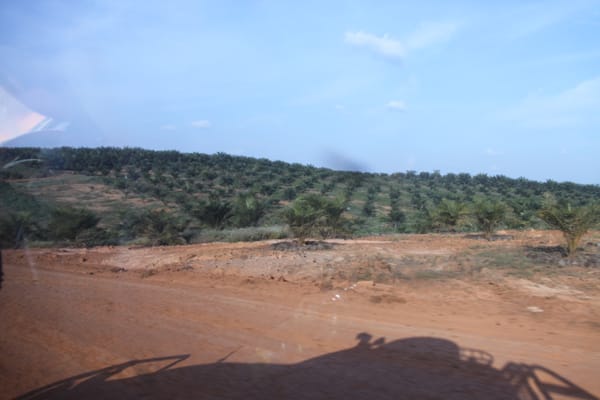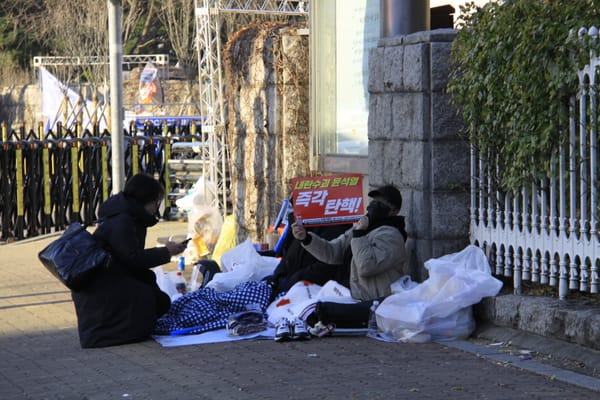Asia Undercovered Special: Mental Health in Asia
India had the highest suicide rate in Asia (CNN)—and that was before COVID-19 hit and removed many social safety nets. Despite the high rates of mental illness, many sufferers don’t get treatment due to high prices and societal stigmas.
A mental health crisis exacerbated by COVID-19 isn’t only troubling for India, in fact, many countries across Asia face a similar dilemma. Despite the need for government programs to help the mentally ill, many Asian countries still don’t have the infrastructure to treat those in need.
In this special issue, written by Raisa Nastukova, a freelance journalist and photographer, we focus on stories about the mental health crisis across Asia.
Like this issue? Forward to a friend, or share on social media using the button below.
Media Coverage of Mental Health
John Crowley saw that his colleagues in the newsroom were burning out with the consistently negative COVID-19 news cycle. He sent a poll to newsroom journalists and received responses from around the world including the Philippines, India, and Indonesia, and found that 77 percent of those polled reported work-related stress; 59 percent said they experienced moments of anxiety or depression during the pandemic (Splice Media)
“Being tough is seen as being part of a journalist’s DNA. Who really wants to put up their hand and say they are struggling? When they do, there isn’t a strategy or playbook to help them. By and large, those who have issues with burnout or mental health become a ‘human-resources problem,’” he wrote. While the pandemic has put enormous stress on many in the newsroom, it can also give the media industry a chance to move towards healthier working environments.
In China, Sixth Tone reports on “Involution”, the sudden popularity of an obscure academic term used by anthropologists. Involution describes the processes that keep agricultural-based societies from progressing. The word struck a chord with many urban Chinese people who have likened it to the insane hours they work in office jobs, or the intense pressure on students to perform well—factors that have led to a work culture of neverending burnout.
“If involution is said to originally have referred to a structural pattern in agricultural society which is repetitive, lacks competition, and prevents progress, then involution today is an endless cycle of self-flagellation, feeling as if you’re running in place and constantly having to motivate yourself day in, day out. So, it’s a highly dynamic trap which consumes a lot of energy. Living in a smallholder society was physically tiring, but this kind of mental torture didn’t exist,” he explained of the term’s modern usage.
According to The World Health Organization, approximately 54 million people in China suffer from depression while 41 million have an anxiety disorder. The Chinese government has worked in the last decade to decrease barriers for treatment for those suffering from mental illness.
India’s Looming Mental Health Crisis
India’s COVID-19 numbers are falling to a manageable number but, while one public health crisis is mitigated for now, a post-COVID mental health crisis could become the country’s next big problem.
Millions of Indians lost a reliable income because of the pandemic, and a strict lockdown made visiting with family and friends nearly impossible for many. One study from 2014 to 2016 conducted by the NIMHANS found that the prevalence of mental illness in India could be as high as 10.6 percent of the population. Additionally, an increase in rates of mental illnesses, like depression and anxiety disorders, are linked to increases in rates of diabetes.
Ram Nath Kovind, India’s president, spoke to graduates of the National Institute for Mental Health and Neurosciences in 2017, saying that “India does not simply have a mental health challenge, it is facing a possible mental health epidemic,”(Mitra, CNN).
The situation is even worse in Kashmir, itself no stranger to trauma. However, despite decades of low-intensity conflict taking its toll on the inhabitants, mental health remains highly stigmatized.
Swati Joshi writes about how a Srinagar based-doctor was sent to visit the Psychiatric Hospital in the Badamwari area. Unable to find the building, he asked passersby for directions but no one knew of any hospital. Eventually, he found a guard and asked the man where the hospital was. After some confusion, the guard recalled that there was no hospital nearby but there was a mental asylum very close by (Kashmir Observer).
“It has been a stigma in the valley to talk about mental health for a long time,” Dr. Maghribi said in the piece. “Since stigma doesn’t encourage people to consult a doctor when in distress, it eventually forces them to take irreversible steps… With the result, Kashmir has seen many suicide cases from people of various age groups and occupations.”
A by Doctors Without Borders found that, in the period from 1989 to 2005, 85 percent of respondents reported being frisked by security forces; 82 percent subjected to round-up raids; 39 percent experienced damage to their property; 26 percent experienced the burning of houses; 73 percent witnessed physical and psychological mistreatment; and 44 percent had themselves experienced physical or psychological mistreatment.
Dozens of Asian Countries Still Shackle the Mentally Ill
A 2020 report by Human Rights Watch found that hundreds of thousands of people around the globe with mental illness are shackled and held in subhuman conditions, including imprisonment in cages and animal shelters for long-term care. Often these cages are dirty and crowded.
While living conditions vary country-to-country, one thing remains consistent across the world: degrading treatment and unsanitary conditions. Dozens of Asian countries do this, including Afghanistan, Bangladesh, Brunei, Cambodia, China, East Timor, India, Indonesia, Japan, Laos, Pakistan, Philippines, Russia, Tajikistan and Thailand (Mia Swart, Al Jazeera).
“All through my childhood, my aunt was locked in a wooden shed and I was forbidden to have contact with her. My family believed her mental condition would stigmatize the whole family. I really wanted to help my auntie but I couldn’t.” - Ying, a young woman from Guangdong province in China.
Due to a lack of mental health support from the state, many families of the mentally ill turn to faith healers or other cultural or religious institutions. Often, the families of these people have no choice but to shackle or restrain the family member, as they are unable to care for them full time.
Asia Undercovered: In-depth round-ups and analysis of the news, events, trends and people changing Asia, but not getting enough attention in the US media.



